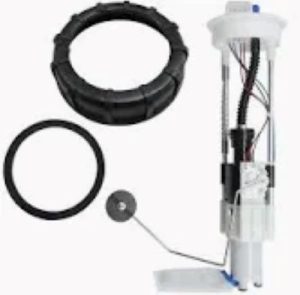Depending on the vehicle type and how high performance level, the vehicle may dictate a specific fuel pump flow rate needed. Most fuel pump requirements for passenger vehicles range from 100 to 150 liters per hour (LPH) to be able to supply the correct amount of fuel, with fuel pressure ideally between 40-60 PSI. Most daily driving scenarios, in which the engine is working its hardest under low to moderate loads, will not require flow rates exceeding these. If your vehicle needs 150 LPH at 45 PSI and the flow drops to say, only 10%, it could be causing engine misfires or have you driving around on wimpy power.
Sports cars and vehicles with high-powered engines (or even more horsepower if the engine is heavily modified) require an entirely different level of fuel flow rates as they consume gasoline at a faster rate. In these situations, fuel pumps are usually required to flow 255 LPH or better at 70-plus PSI. For example, a turbocharged engine that is over the 500 horsepower mark could call for something like a pump that can deliver upwards of 300 LPH to ensure fuel availability during wide open throttle acceleration. If the pump does not meet this need, it can result in a drop of up to 15% in engine power, which affects overall performance at high speed or competitive driving.

Heavier vehicles with towing or other heavy-duty applications, such as trucks and SUVs, will require a higher flow rate fuel pump to handle the additional load. And if the vehicles are to be used for, say, driving up hills or towing a heavy trailer, fuel pumps delivering 200-250 LPH may be needed in order to keep the engines performing. So: farm truck pulling a 5000 pound implement, just misses the mark on what fuel is pumped into his tank, AND= he can lose as much as 20% in MPG?
It is common in hybrid or electric vehicles that use fuel pumps to assist with combustion engines, lower flow rates compared to traditional gasoline powered cars. A hybrid car would need something more in the line of 80 to 100 LPH as its fuel pump only required once in every while when the combustion engine is working. In such a system, efficiency is paramount and a small drop in flow rate might only result in slight loss of performance which crack through the image attached to the product so that it ceases to satisfy for way factory driving feeling.
Advancements in Industry and their Flow Rate Requirements For example, the new fuel pump is a variable-speed pump that can change flow rates to meet engine needs in real time. The resulting systems are designed to optimize fuel delivery and avoid waste by speculatively firing all the injectors just in case. The technology was more widely adopted in 2020 when multiple automakers including General Motors and Mazda began using it on their higher-performance models, getting up to 15% better fuel economy yet permitting high flow rates under heavy load.
To know about fuel pump flow rate required or how it can effect vehicle performance click here Fuel Pump.